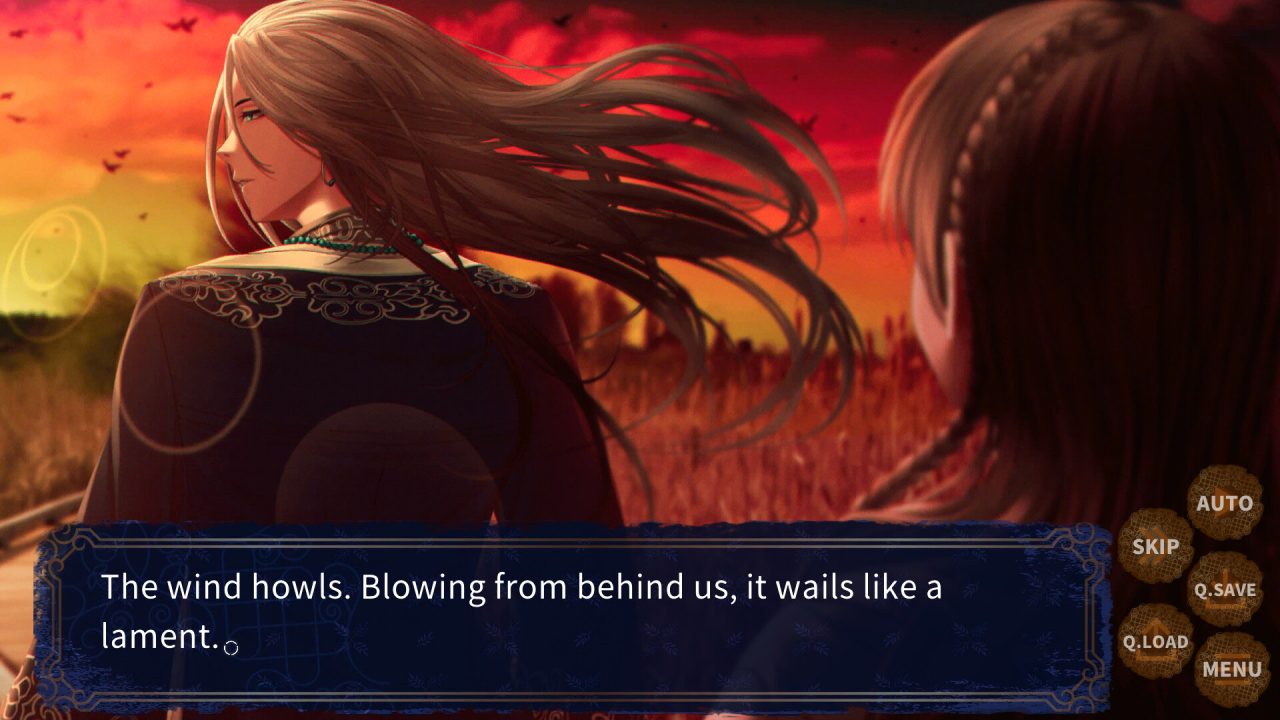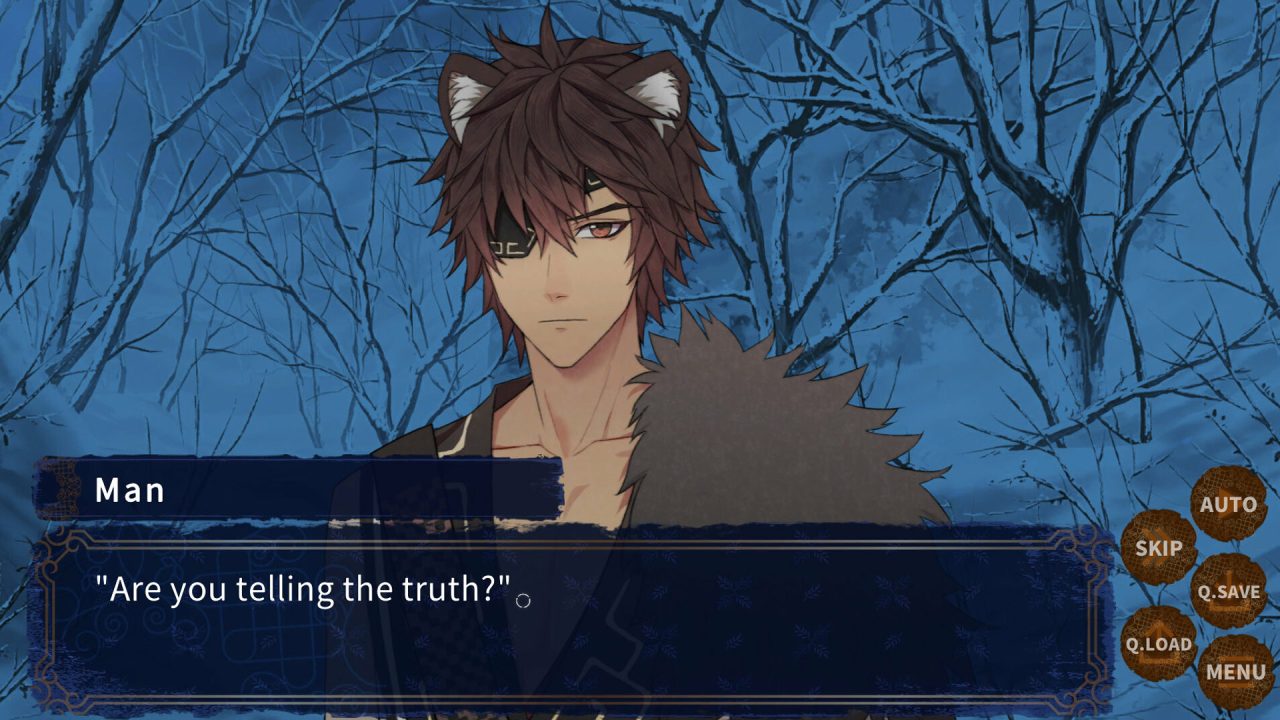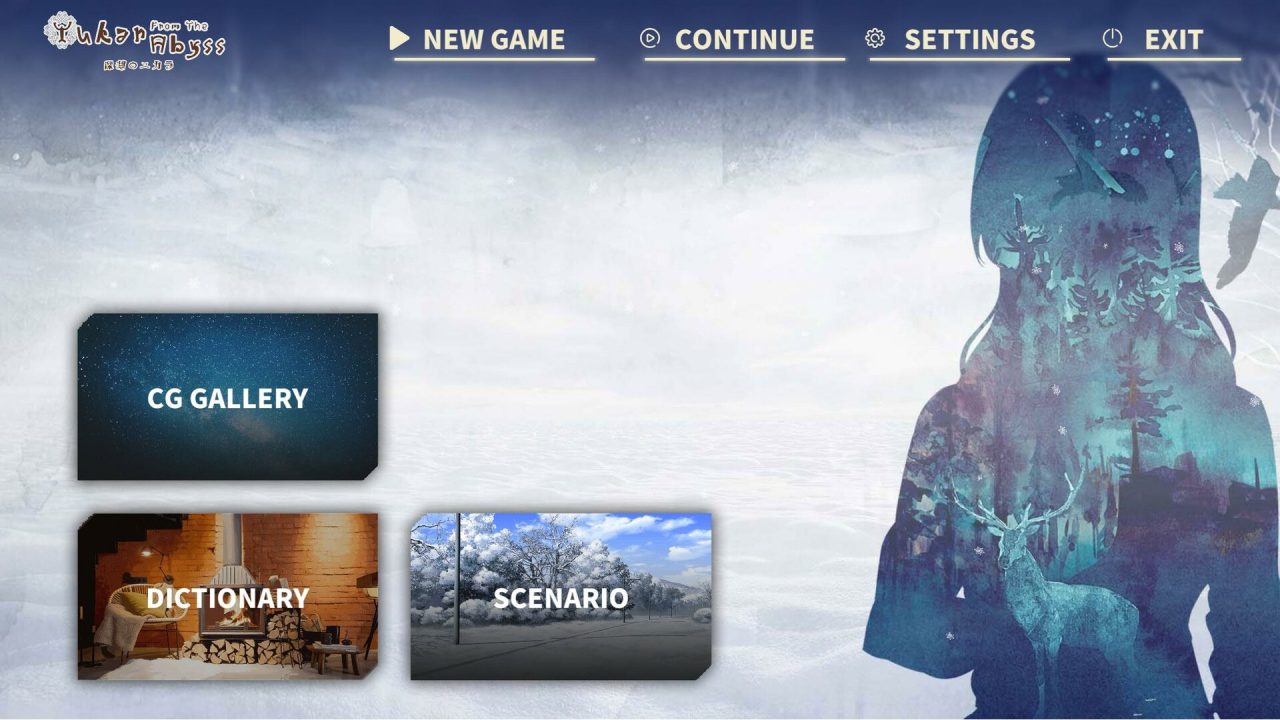In ancient times, a myriad of gods visited the mortal realm, bestowing their blessings upon devoted humans. Humanity forgot about the gods and their gifts, resulting in the disenchantment of many of the gods who left the mortal world behind for good. Only a few gods remain, with varying views on humanity and the current state of the world. In the Japanese indie otome visual novel Yukar From The Abyss, a strange turn of events leads to a young woman encountering some godly remnants. Will her encounters with these deities ultimately bestow blessings or curses?
Yukar From The Abyss stars Kurumi Oki, a woman moving from Tokyo to her grandmother’s rural Japanese home after losing her job in a toxic work environment. While trying to make the best of things, she falls asleep on the train ride back after catching up with an old friend at a bar, missing her stop. The last train station drops her in unfamiliar territory, and as Kurumi tries to make her way to a shelter, she encounters strange lights. Following the lights, she experiences supernatural occurrences of a godly nature, careening her down the path of four particular deities. How is Kurumi connected to this immortal realm, and can she survive her encounters there?
Based on Ainu mythology, Yukar From The Abyss is a straightforward visual novel experience. Those familiar with the genre and otome titles, in particular, will know what to expect regarding gameplay. You can skip through script text you’ve seen from previous playthroughs, which is a boon since the game lacks a story map. Fortunately, there are only four routes to get through, with three permutations to the endings depending on the player’s choices during the game. Each route is relatively short, at around four hours long, so the lack of a story map isn’t as detrimental as it could be.
Yukar From The Abyss is a concise VN that you can get through quickly, but it’s noteworthy that the quality and pacing of each route don’t feel lacking or rushed. The four main love interests all have fleshed-out stories to experience. The character development is phenomenal, especially if you get the excellent End 1 outcome for all four characters in which Kurumi and her chosen love interest stand on equal footing in a true partnership. These endings show Kurumi taking on more agency and even gaining a large percentage of power herself supernaturally and through choice. As stated earlier, the story is influenced by Ainu mythology, which makes for a unique storytelling experience. I wasn’t as familiar with Ainu mythology as I thought and greatly enjoyed exploring this fascinating and unique culture’s belief systems through this VN. Some of the routes, notably Kyril’s, delve deeper into Japanese history, too, and I appreciate those insights.
I even like the character routes that are antagonistic in the beginning, such as Moshirechik’s, who gradually develops from a haughty and self-centered character who struggles with controlling his emotions to someone with an understandably upsetting backstory who acknowledges his faults and tries to overcome them. This changing of opinions on characters stems from how believably they evolve and progress in surprisingly positive ways should you see their stories through, which isn’t something I can often say for those types of characters in other otome titles. Some side characters, notably the loyal Koshimpuk and the cheerfully helpful Upa, are also significantly fleshed out and likable throughout the differing routes. Kurumi herself is a great main character as well, with a lot of depth depending on the route.
Visually, Yukar From The Abyss brings to mind stark scenery with many of its natural background vistas. The backgrounds are detailed and gorgeous, and the character art is beautiful and expressive for those characters who have it. I love the minute detail and intricate touches on the clothing for the characters based around the Ainu culture, and when the art showcases elements of nature in a character’s designs: for example, Pewrep’s bear ears or when Huaisu reveals some of his more birdlike qualities. It’s so good that I’m somewhat disappointed that certain minor characters get relegated to black silhouettes. The CG illustrations players earn depending on their actions are also gorgeous. Supernatural elements are presented visually in an almost painted fashion that compliments the mythological undertones of the plot, though there is an almost photographic realism to the backgrounds in particular. Special effects for fight scenes, such as an icicle wrapped in wind or bursts of flame against the screen, happen frequently. While they aren’t bad, they sometimes take you out of the story since they look more artificial than the drawn art and photograph-like images used for backgrounds. Overall, though, this is a very nice-looking VN!
Yukar From The Abyss’ soundscape is also lovely, with a musical score that perfectly fits the atmosphere and story. The instrumentation used for the songs emphasizes traditional sounds and effects, which fits with the story’s mythological themes. The main theme is particularly noteworthy in that regard. The only voice acting is for the four love interests, and their Japanese voice work is top-notch. You can hear the voice work in the game’s Switch trailer. The music in specific routes could sometimes drown out the voice acting depending on what was happening in a scene, but it wasn’t a significant issue. Because the voice acting is so good for the four love interests, I would’ve loved it if other prominent characters had voices, too!
There aren’t a ton of extras found in Yukar From The Abyss. You have the customary CG gallery for any illustrations you uncover during gameplay and a helpful dictionary that updates with new terms and information whenever necessary. The dictionary is especially great for those who want to learn about Ainu myths and culture. There are also character route scenarios where you can view the start of specific character routes and any of the three endings for a character uncovered. Getting an End 1 finale for a character unlocks an “After Story” segment in their scenario, which serves as a nice epilogue. Script-wise, the translation is well done, with only a few grammatical inconsistencies.
Yukar From The Abyss is a short, nicely scripted otome VN experience for either PC or Nintendo Switch. I enjoyed playing the game and especially love the story and character development that occur in pursuit of the “good” endings. Those who don’t mind romance intermixed with godly tales may want to give Yukar From The Abyss more than a glance.





